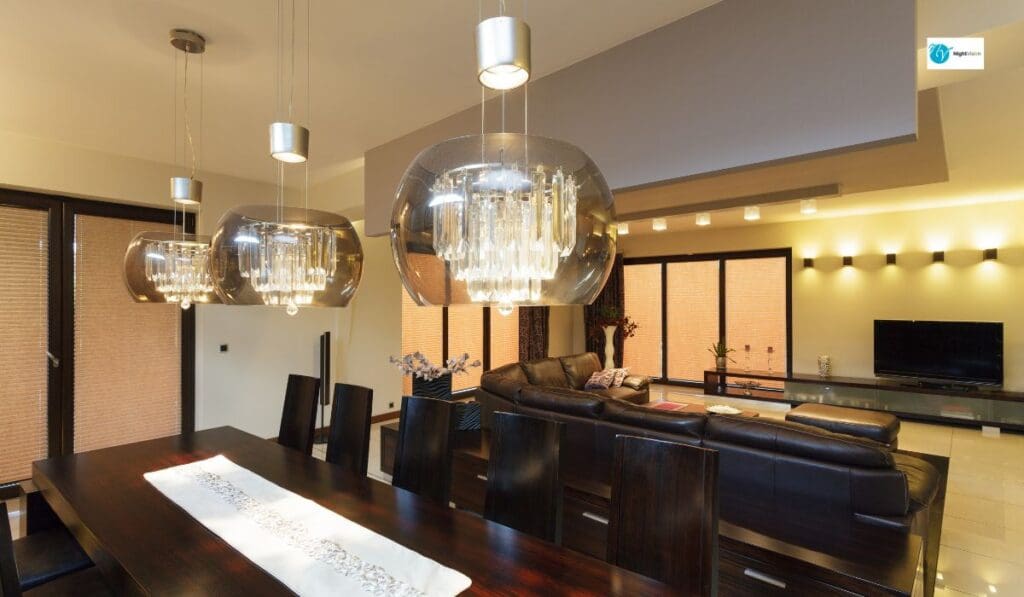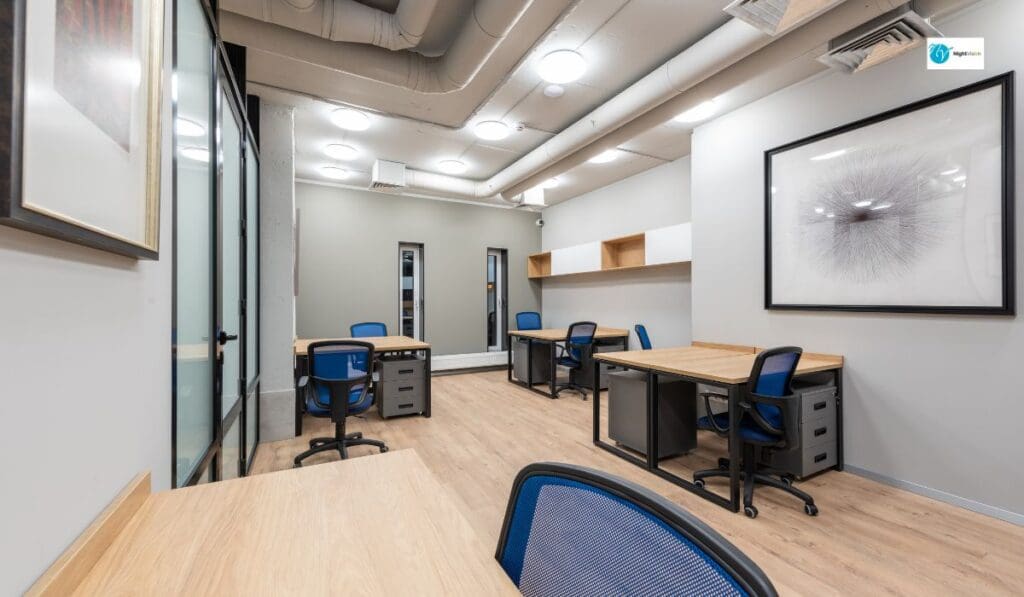Home lighting systems play a crucial role in creating a comfortable and functional living environment.
However, like any other home system, they can encounter various issues over time.
Understanding these common problems and how to address them can save you time, money, and the hassle of living with inadequate lighting.
Here are some of the most frequent lighting issues and practical solutions for each.
Flickering Lights
Causes:
- Loose Bulbs: Often, flickering lights are caused by bulbs that aren’t screwed in tightly.
- Faulty Switches: Worn-out switches can also cause lights to flicker.
- Voltage Fluctuations: Electrical surges or inconsistent voltage levels can lead to flickering.
Solutions:
- Tighten Bulbs: Ensure that all bulbs are securely screwed in.
- Check Switches: Replace any faulty switches. If you need more time to do this, hire a licensed electrician.
- Stabilize Voltage: If voltage fluctuations are frequent, consider installing a whole-house surge protector.
Buzzing or Humming Lights
Causes:
- Dimmer Switches: Incompatible or poor-quality dimmer switches can cause a buzzing sound.
- Loose Fixtures: Loose light fixtures can also produce a humming noise.
Solutions:
- Upgrade Dimmer Switches: Ensure that your dimmer switches are compatible with the type of bulbs you are using (e.g., LED, CFL, incandescent).
- Secure Fixtures: Tighten any loose components in your light fixtures.
Frequent Bulb Burnouts
Causes:
- Overheating: Enclosed fixtures can cause bulbs to overheat and burn out quickly.
- High Voltage: Excessively high voltage can shorten bulb lifespan.
- Poor Quality Bulbs: Low-quality bulbs may have a shorter lifespan.
Solutions:
- Use Proper Bulbs: Ensure you’re using bulbs that are rated for enclosed fixtures if applicable.
- Check Voltage: Have an electrician check if your home’s voltage is too high. Installing a voltage regulator might be necessary.
- Choose Quality Bulbs: Invest in higher-quality bulbs with longer lifespans.
Dead Outlets
Causes:
- Tripped Circuit Breaker: Overloaded circuits can cause breakers to trip, cutting power to the outlet.
- Faulty Wiring: Loose or damaged wiring can render an outlet non-functional.
Solutions:
- Reset Breaker: Locate your home’s electrical panel and reset the tripped breaker.
- Inspect Wiring: If the problem persists, inspect the outlet wiring or hire an electrician to do so.
Dimming or Fluctuating Lights
Causes:
- Overloaded Circuit: Too many high-wattage appliances on the same circuit can cause lights to dim.
- Aging Wiring: Old or degraded wiring can cause inconsistent lighting performance.
Solutions:
- Reduce Load: Distribute appliances across different circuits to balance the load.
- Upgrade Wiring: Consider having an electrician inspect and upgrade your home’s wiring if it’s outdated.
Light Switch Not Working
Causes:
- Worn-Out Switch: Over time, switches can wear out and stop functioning.
- Faulty Wiring: Loose or damaged wiring connections can also cause switch failures.
Solutions:
- Replace Switch: Replace the malfunctioning switch with a new one. Ensure you turn off the power at the breaker box before doing so.
- Check Wiring: Inspect the wiring connections or hire a professional if you need to become more experienced with electrical work.
Lights Not Turning On
Causes:
- Burnt-Out Bulbs: The most straightforward cause could be a burnt-out bulb.
- Faulty Fixture: The light fixture itself may be faulty.
- Electrical Issue: There could be a more significant issue with the electrical supply.
Solutions:
- Replace Bulbs: Start by replacing any burnt-out bulbs.
- Inspect Fixture: Check if the fixture is functioning correctly. Replace it if necessary.
- Consult an Electrician: If the problem persists, it’s best to have an electrician inspect your electrical system.
Inconsistent Lighting Color
Causes:
- Mixed Bulb Types: Using different types of bulbs (e.g., LED, CFL, incandescent) can result in varying light colors.
- Bulb Degradation: Bulbs can change color as they age.
Solutions:
- Uniform Bulbs: Use the same type and brand of bulbs in a single fixture or room to ensure consistent lighting.
- Replace Old Bulbs: Regularly replace old bulbs to maintain consistent color quality.
Inadequate Lighting
Causes:
- Insufficient Light Fixtures: Not having enough light fixtures in a room can result in dim lighting.
- Incorrect Bulb Wattage: Using bulbs with too low wattage can fail to provide adequate light.
Solutions:
- Add Fixtures: To brighten up the space, consider adding more light fixtures, such as table lamps, floor lamps, or wall sconces.
- Upgrade Bulbs: Use bulbs with higher wattage or higher lumen output to ensure sufficient lighting.
Lights Turning On and Off by Themselves
Causes:
- Faulty Timer or Sensor: Automated lighting systems with timers or sensors can malfunction.
- Loose Connections: Loose electrical connections can cause intermittent power supply to the lights.
Solutions:
- Check Timers and Sensors: Ensure timers and sensors are set correctly and functioning properly. Replace faulty components as needed.
- Secure Connections: Inspect and secure all electrical connections. If you need more time, hire an electrician to check the wiring.
High Energy Bills
Causes:
- Inefficient Bulbs: Using incandescent or other inefficient bulbs can result in higher energy consumption.
- I am leaving Lights On: Forgetting to turn off lights when not in use increases energy usage.
Solutions:
- Switch to LED Bulbs: LED bulbs are more energy-efficient, have a longer lifespan compared to traditional incandescent bulbs, and LED light repair is often simpler.
- Use Smart Lighting: Install intelligent lighting systems that can be controlled remotely and programmed to turn off automatically when not in use.
Light Fixture Overheating

Causes:
- Bulbs with Too High Wattage: Using bulbs with higher wattage than the fixture’s rating can cause overheating.
- Poor Ventilation: Fixtures with inadequate ventilation can overheat, especially in enclosed spaces.
Solutions:
- Use Correct Wattage: Always use bulbs that match the fixture’s recommended wattage.
- Improve Ventilation: Ensure that fixtures have adequate ventilation. For enclosed fixtures, consider using bulbs designed for such environments.
Conclusion
Maintaining a well-functioning home lighting system is essential for comfort, safety, and energy efficiency.
By understanding common lighting issues and their solutions, you can keep your home well-lit and inviting.
Regular maintenance, thoughtful upgrades, and choosing the proper lighting for each room will enhance your living space and ensure that your home remains a bright and welcoming environment.
For more complex issues or electrical work, always consult a professional electrician to ensure safety and proper resolution.
For professional assistance with your home lighting system, contact the experts at NightVision Outdoor Lighting.
They can provide tailored solutions to meet your lighting needs and ensure your home remains well-lit and safe. Contact them today to schedule a consultation!
FAQs
Why are my lights flickering?
Loose bulbs, faulty switches, or voltage fluctuations can cause flickering lights.
How do I fix flickering lights?
Tighten the bulbs, check and replace faulty switches, and consider installing a whole-house surge protector to stabilize voltage.
Why do my lights buzz or hum?
Buzzing or humming lights are often due to incompatible dimmer switches or loose fixtures.
How can I stop the buzzing or humming?
Upgrade dimmer switches to ensure compatibility with your bulbs and tighten any loose components in your light fixtures.
Why do my bulbs burn out frequently?
Frequent bulb burnouts can be due to overheating, high voltage, or using poor-quality bulbs.
What can I do to prevent frequent bulb burnouts?
Use bulbs rated for enclosed fixtures, have an electrician check for high voltage and invest in higher-quality bulbs.
Why is my outlet not working?
Dead outlets can result from a tripped circuit breaker or faulty wiring.
How do I fix a dead outlet?
Reset the circuit breaker and inspect or repair the wiring. If you need more clarification, hire an electrician.
What causes my lights to dim or fluctuate?
An overloaded circuit or aging wiring can cause this.
How do I fix dimming or fluctuating lights?
Reduce the load on the circuit by distributing appliances, and consider having an electrician upgrade your home’s wiring.
Why won’t my light switch work?
A non-working light switch can be due to a worn-out switch or faulty wiring.
How do I fix a non-working light switch?
Replace the switch and check the wiring connections. Before doing any work, turn off the power at the breaker box.
Why won’t my lights turn on?
This could be due to burnt-out bulbs, a faulty fixture, or an electrical issue.
How do I get my lights to turn on?
Replace any burnt-out bulbs, inspect and possibly replace the fixture, and consult an electrician if the problem persists.
Why do my lights have inconsistent colors?
Using different types of bulbs or bulb degradation can cause inconsistent lighting color.
How can I achieve consistent lighting color?
Use the same type and brand of bulbs in a single fixture or room and regularly replace old bulbs.
Why is my room too dim?
Inadequate lighting can result from insufficient light fixtures or using bulbs with too low wattage.
How can I improve the lighting in my room?
Add more light fixtures like table lamps or wall sconces and use bulbs with higher wattage or lumen output.




